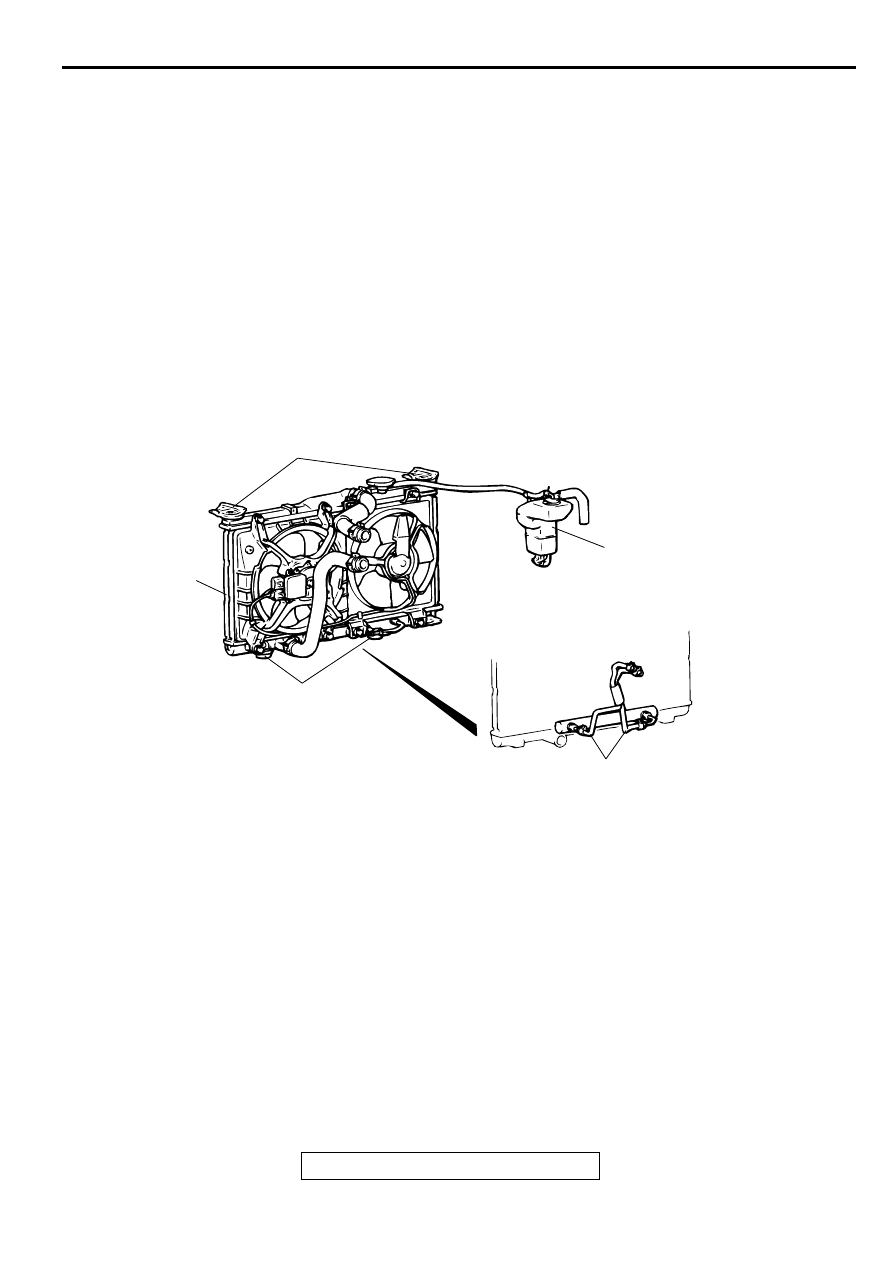Mitsubishi Galant. Manual - part 331

GENERAL INFORMATION
TSB Revision
ENGINE COOLING
14-2
.
G EN ER A L IN FO R M ATIO N
M1141000100070
The cooling system is designed to keep every part of
the engine at appropriate temperature in whatever
condition the engine may be operated. The cooling
method is of the water-cooled, pressure forced
circulation type in which the water pump pressurizes
coolant and circulates it throughout the engine. If the
coolant temperature exceeds the prescribed
temperature, the thermostat opens to circulate the
coolant through the radiator as well so that the heat
absorbed by the coolant may be radiated into the air.
The water pump is of the centrifugal type and is
driven by the drive belt from the crankshaft. The
radiator is the corrugated fin, down flow type and is
cooled by an electrical radiator fan. And if the engine
coolant temperature reaches 110
°
C(230
°
F) or
higher, the radiator fan control rotates the radiator
fan for up to 5 minutes even after the ignition switch
is turned to the "LOCK (OFF)" position [the fan stops
its rotation when the engine coolant temperature
decreases to 110
°
C(230
°
F) or lower.]
CONSTRUCTION DIAGRAM
EN G IN E C O O LIN G D IA G N O SIS
INTRODUCTION
M1141005300091
The system cools the engine so that it does not
overheat and maintains the engine at an optimum
temperature. The system components are the
radiator, water pump, thermostat, condenser fan
assembly. Possible faults include low coolant,
contamination, belt loosening and component
damage.
TROUBLESHOOTING STRATEGY
M1141005200094
Use these steps to plan your diagnostic strategy. If
you follow them carefully, you will be sure that you
have exhausted most of the possible ways to find an
engine cooling fault.
AC004034 AB
A/T OIL COOLER HOSE
RESERVE TANK
LOWER INSULATOR
RADIATOR
RADIATOR SUPPORT